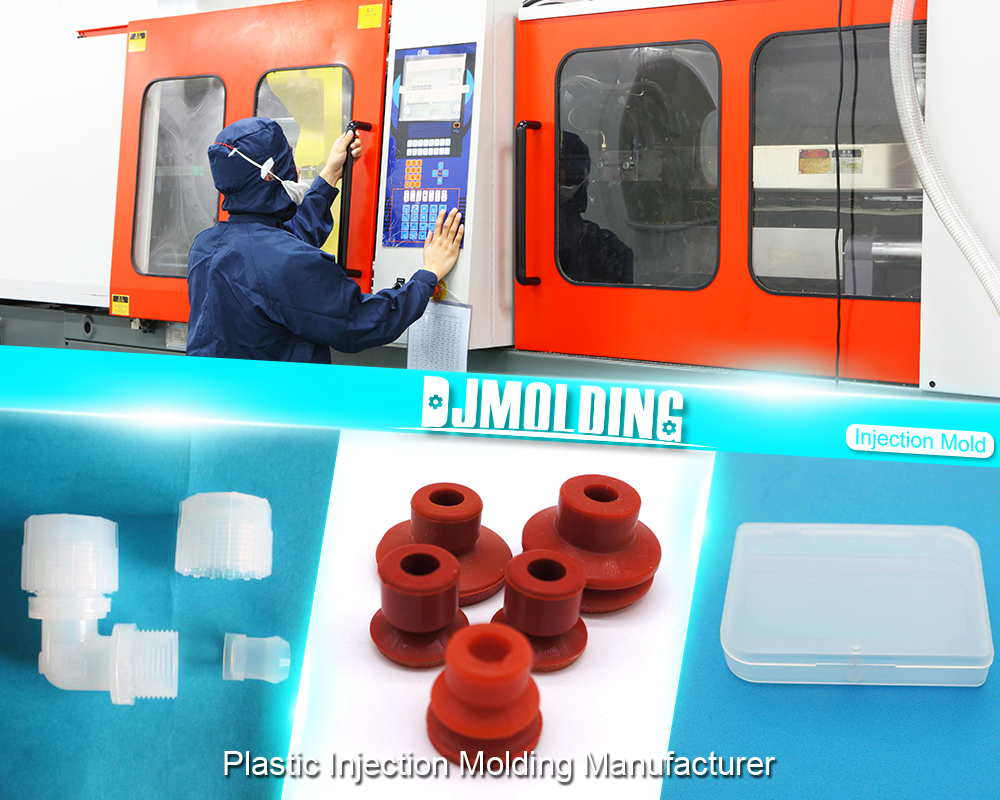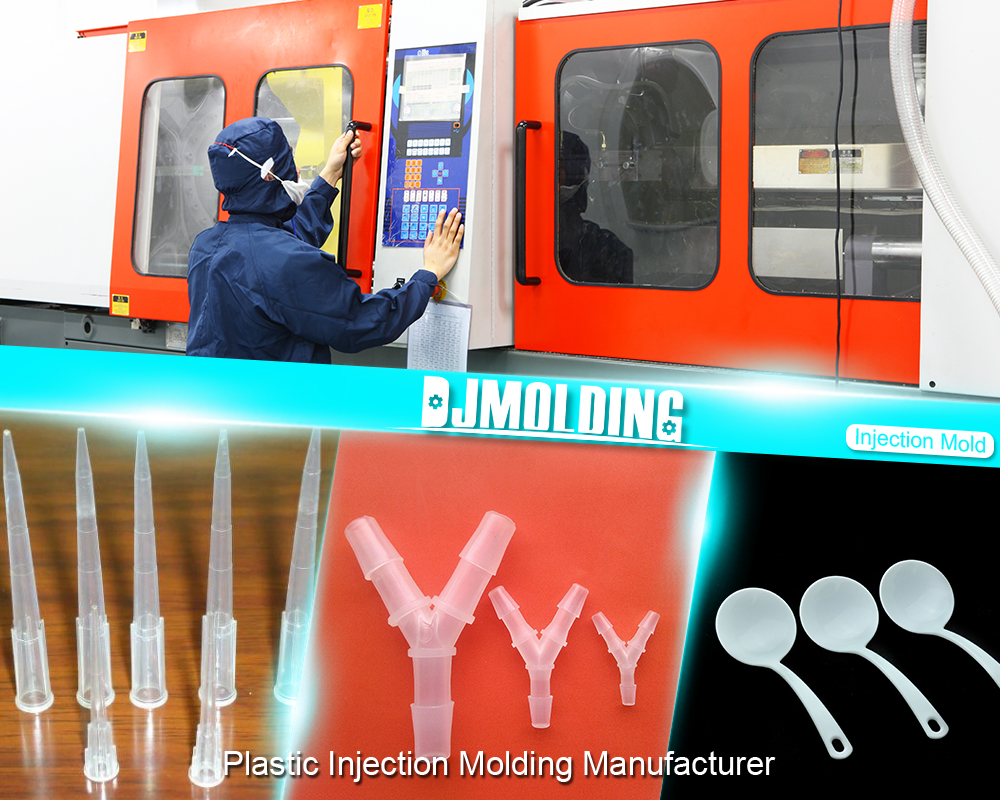Комплексное руководство по литью под давлением в небольших объемах для контрактного производства.
Литье под давлением с малым объемом (ЛВИМ) это производственный процесс, используемый для производства небольших партий высококачественных деталей.. Процесс включает впрыскивание расплавленного пластика в полость формы под высоким давлением., который охлаждается и затвердевает с образованием желаемого количества. Производители используют LVIM для небольших производственных партий., прототипы, и детали на заказ. Это экономичное решение для производства деталей, требующих высокой точности., сложная геометрия, и жесткие допуски.

Advantages of LVIM
There are several advantages of using LVIM over other manufacturing methods:
- Экономически эффективным: LVIM is an economical solution for producing small batches of parts, requiring low tooling costs and minimal setup time.
- Высокая точность: The precision of LVIM makes it an ideal solution for features that require high accuracy and tight tolerances.
- Гибкость: LVIM can accommodate a wide range of part geometries and shapes, making it a flexible solution for producing complex parts.
- Quick turnaround: LVIM has a short production time, which allows manufacturers to create pieces quickly and efficiently.
LVIM vs. Other Manufacturing Methods
LVIM offers several advantages over other manufacturing methods, such as CNC machining and 3D Printing. CNC machining is a subtractive manufacturing process that involves removing material from a block of raw material to create a desired shape. While CNC machining can produce high-quality parts, it is unsuitable for making small batches due to high tooling and setup costs. 3D Печать, с другой стороны, is an additive manufacturing process that builds up a part layer by layer. While 3D Printing is suitable for quickly producing small quantities of parts, it is not as accurate as LVIM and cannot deliver parts with the same level of precision.
The LVIM Process
Дизайн пресс-форм
The first step in the LVIM process is to design a mold that matches the part’s specifications. Во время производства, manufacturers typically clamp together two halves of the mold. Designers create the mold to fit the part’s shape, forming a cavity filled with molten plastic material.
Выбор материала
The next step is to select the appropriate material for the part. The choice of material depends on several factors, such as the part’s function, the operating environment, and the desired mechanical properties. LVIM can use various materials, включая термопласты, реактопласты, эластомеры, and composites.
Литьевая машина
Once the mold design and material selection are complete, the next step is to set up the injection molding machine. The machine consists of three parts: блок впрыска, the clamping unit, and the control system. The injection unit heats and melts the plastic material while the clamping team holds the mold during production. The control system regulates the temperature, давление, and other parameters during production.
Production
The LVIM production process begins with the injection unit heating and melting the plastic material. The molten material is then injected into the mold cavity under high pressure, filling it and taking on the shape of the part. Afterward, the mold is cooled, and someone removes the piece.
Materials Used in LVIM
LVIM offers the flexibility to use various materials, включая термопласты, реактопласты, эластомеры, and composites. The choice of material depends on the specific application, performance requirements, and part complexity.
Термопласты
Thermoplastics are the most commonly used materials in LVIM, known for their excellent mechanical properties, долговечность, and ease of processing. Some common thermoplastics used in LVIM include polypropylene, полиэтилен, АБС, and polycarbonate.
Реактопласты
Thermosets are materials cured through a chemical reaction, resulting in a rigid and durable part. They offer high strength, термостойкость, и стабильность размеров, making them ideal for applications that require high-performance features. Examples of thermoset materials used in LVIM include epoxy, phenolic, and melamine.
Эластомеры
Elastomers are materials that exhibit rubber-like properties, including high elasticity, гибкость, and resistance to deformation. Manufacturers commonly use them in applications that require seals, прокладки, and other flexible components. Examples of elastomers used in LVIM include silicone, natural rubber, and nitrile rubber.
Composites
Manufacturers combine two or more materials to form composites, creating a more robust and durable fabric. They offer excellent strength-to-weight ratios, resistance to impact, and other desirable properties. Examples of composites used in LVIM include fiberglass, carbon fiber, and Kevlar.
Design Considerations for LVIM
When creating high-quality LVIM parts, it is essential to consider several design factors that impact the overall quality, функциональность, and cost. Some of the critical design considerations for LVIM include the following:
Wall Thickness
The wall thickness of a part should be uniform to avoid warping, утяжины, and other defects. Thicker walls can also result in longer cooling times and higher cycle times, increasing production costs.
Part Geometry
Designers should design the part geometry to minimize stress concentrations, minimize undercuts, and avoid sharp corners. These design features can lead to voids, утяжины, and other defects.
Draft Angle
The part requires draft angles to eject it from the mold, and low draft angles may cause the part and mold to become stuck, resulting in damage.
Tolerances
The design should consider tolerances to ensure that the final part meets the required dimensions and tolerances. Tight tolerances may increase the cost of production, while looser tolerances may lead to elements that do not meet the required specifications.
Examples of LVIM Applications
LVIM has found applications in various industries, в том числе автомобильная, медицинский, аэрокосмический, и потребительские товары. Some notable examples of LVIM applications include:
Автоматизированная индустрия
LVIM is used in the automotive industry to produce small batches of custom-made parts, such as dashboard components, interior trim, and door handles.
Медицинское оборудование
LVIM is used in the medical industry to produce small batches of custom-made parts, such as surgical instruments, drug delivery devices, и протезирование.
Аэрокосмическая промышленность
LVIM is used in the aerospace industry to produce small batches of custom-made parts, such as air ducts, interior trim, и панели управления.
Потребительские товары
LVIM is used in the consumer products industry to produce small batches of custom-made parts, such as smartphone cases, game controllers, and kitchen appliances.
LVIM vs. Other Manufacturing Methods
Comparison with CNC Machining
Обработка с ЧПУ is a subtractive manufacturing method that removes material from a block to create a part. ЛВИМ, с другой стороны, is an additive manufacturing method that injects molten material into a mold to make a part. CNC Machining can produce high-quality parts with excellent surface finish, but it’s more suitable for large batches. ЛВИМ, с другой стороны, is ideal for making small batches of high-quality parts quickly and cost-effectively.
Comparison with 3D Printing
3D Printing is an additive manufacturing method that builds a part layer-by-layer from a digital model. ЛВИМ, с другой стороны, is an injection molding process that injects molten material into a mold to create a part. 3D Printing can produce complex geometries, but the components may have poor mechanical properties. ЛВИМ, с другой стороны, can produce high-quality parts with excellent mechanical properties, but it could be more suitable for making large parts or parts with highly complex geometries.

ЗАКЛЮЧЕНИЕ
В заключение, LVIM is an excellent solution for companies that need to produce small quantities of custom-made parts. Whether for prototypes, testing purposes, или low-volume production runs, LVIM offers many advantages over other manufacturing methods. With its ability to produce high-quality parts quickly and efficiently, LVIM will play a vital role in the manufacturing industry in the coming years.
Подробную информацию о подробном руководстве по литье под давлением в малых объемах for contract manufacturing low volume,Вы можете посетить Djmolding по адресу https://www.djmolding.com/low-volume-injection-molding/ для получения дополнительной информации.
Оригинал статьи из: https://www.djmolding.com/a-comprehensive-guide-of-low-volume-injection-molding-for-contract-manufacturing-low-volume/


